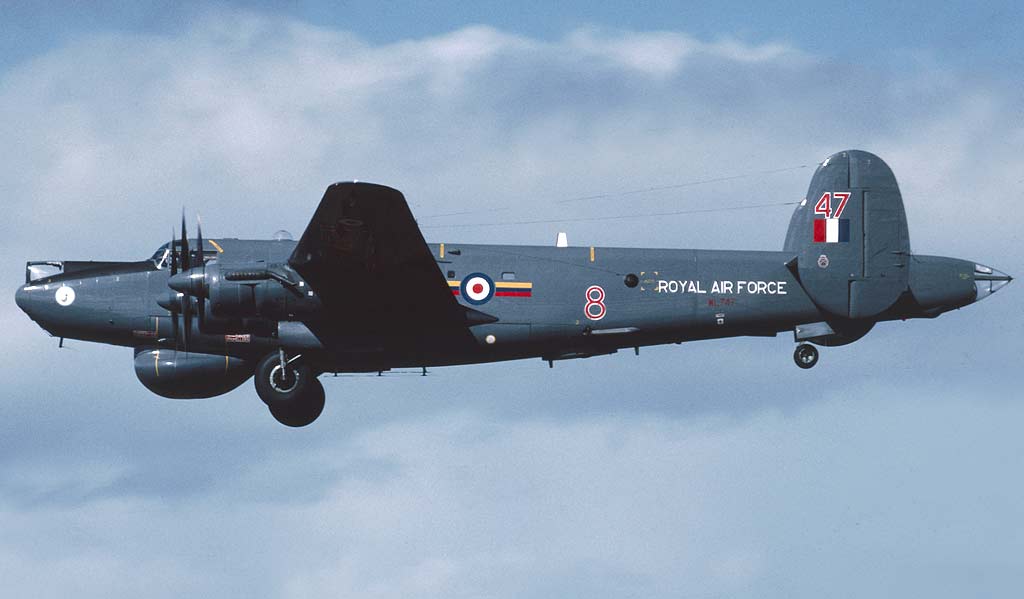The Avro Shackleton was a British long-range maritime patrol, AEW, and anti-submarine warfare aircraft, with Rolls-Royce Griffon engines.
In brief
The Avro Shackleton, a British long-range maritime patrol and anti-submarine aircraft developed by Avro, served primarily with the Royal Air Force. It was a derivative of the Avro Lincoln bomber, itself a descendant of the famous Lancaster. Entering service in 1951, the Shackleton was designed for long-endurance service, often engaging in 14-hour missions, equipped with powerful Rolls-Royce Griffon engines. Over the years, it underwent several modifications, including an Airborne Early Warning role. It was distinguished by its extensive range, endurance, and comprehensive array of detection equipment, retiring after nearly 40 years of service.
The Avro Shackleton was a testament to British aeronautical engineering, serving as a cornerstone in long-range maritime patrol and anti-submarine warfare for the Royal Air Force (RAF) and other operators. Its robust design and versatility allowed it to adapt to evolving military needs over its operational tenure.
History of the Development of the Avro Shackleton
The Avro Shackleton was born out of post-WWII military needs. As tensions heightened during the early stages of the Cold War, there was an increasing requirement for effective maritime patrol aircraft to counter potential submarine threats. The British Air Ministry, seeking a long-range maritime patrol aircraft, initiated the Shackleton program in the late 1940s. The aircraft, developed by Avro, an esteemed British aircraft manufacturer, was a derivative of the Avro Lincoln bomber, which in turn had evolved from the famous Lancaster.
The Shackleton first took flight on 9 March 1949, with the objective to provide the RAF with a significantly improved range, endurance, and payload capacity over its predecessors. This was in response to the vast areas of ocean that needed to be patrolled to protect British and NATO interests. The aircraft did not receive a specific NATO nickname as some others did during the era.
The need for the Shackleton was also a reflection of the strategic shift in military tactics and technology. The post-war world saw rapid advancements in submarine technology, necessitating a robust response from air forces worldwide. The Shackleton was Britain’s answer, providing a platform capable of long, vigilant patrols over the vast expanses of the Atlantic and other oceans.

Design of the Avro Shackleton
The design of the Avro Shackleton featured several notable aspects. It was equipped with four Rolls-Royce Griffon 57A engines, each driving a contra-rotating propeller, providing significant power and reliability. The aircraft’s design was characterized by its unpressurized fuselage, tailwheel undercarriage, and extensive maritime patrol equipment, including radar and sonobuoys.
In terms of dimensions, the Shackleton had a length of approximately 87 ft (26.6 m) and a wingspan of 120 ft (36.6 m). It had a maximum takeoff weight of around 100,000 lbs (45,359 kg). The aircraft’s range and endurance were its most notable features, allowing for patrols that could last up to 14 hours without refueling.
While the Shackleton was robust and versatile, it had its drawbacks. Its unpressurized cabin and noisy environment were challenging for crews, especially during long missions. Moreover, as newer technologies and aircraft designs emerged, the Shackleton began to show its age, leading to various upgrades and modifications throughout its service life.
Performance of the Avro Shackleton
The performance of the Avro Shackleton was centered around its endurance and range. Powered by the Rolls-Royce Griffon engines, it had a maximum speed of about 300 mph (482 km/h) and a service ceiling of 20,000 ft (6,096 m). Its operational range was approximately 4,500 miles (7,242 km), making it ideal for long-duration patrols.
When compared to contemporary maritime patrol aircraft of other nations, the Shackleton held its own, especially in endurance and loitering capability. However, as jet aircraft became more prevalent, the Shackleton’s piston engines and slower speeds became less competitive. Nonetheless, its ability to carry a wide array of armaments and sensors ensured it remained a valuable asset for years.
Variants of the Avro Shackleton
The Avro Shackleton saw several variants over its operational life. The initial variant was the MR.1, followed by the MR.2 with enhanced range and updated systems. The MR.3 variant introduced tricycle landing gear and further avionics improvements. One of the most significant variants was the AEW.2, converted for airborne early warning duties, extending the life of the aircraft type by providing capabilities to detect low-flying targets over the sea.
Military Use and Combat of the Avro Shackleton
The Shackleton was primarily a peacetime guardian, patrolling the peripheries of NATO’s maritime boundaries, engaging in anti-submarine warfare exercises, and providing a deterrence against potential submarine threats. It was equipped with depth charges, homing torpedoes, and sonobuoys, among other armaments.
While not typically used in direct combat, the Shackleton was involved in various conflicts and crises, providing reconnaissance, search and rescue, and maritime patrol capabilities. It served notably during the Suez Crisis and in various African colonial conflicts. The aircraft was also exported to South Africa, where it continued in service until the 1980s.
The Shackleton was eventually phased out, replaced by more modern aircraft like the Nimrod in the UK. Its legacy, however, remains in the annals of military aviation history as a symbol of endurance and vigilance over the seas.
The Avro Shackleton, with its distinctive design and notable service record, was a critical component of the RAF’s maritime patrol capabilities for nearly four decades. Its development was a testament to the evolving military needs of the post-WWII era, and its service reflected the strategic importance of maritime patrol and anti-submarine warfare during the Cold War. Despite its eventual retirement, the legacy of the Shackleton endures as a symbol of endurance, versatility, and commitment to long-range patrol duties.
Back to the Special Aircraft section.